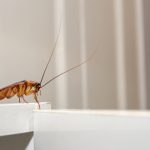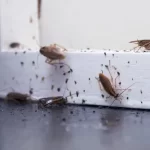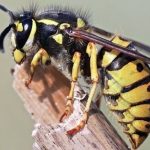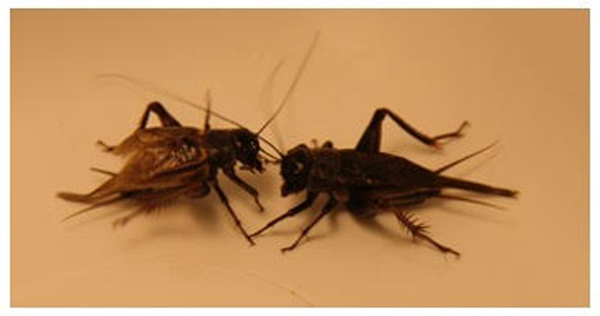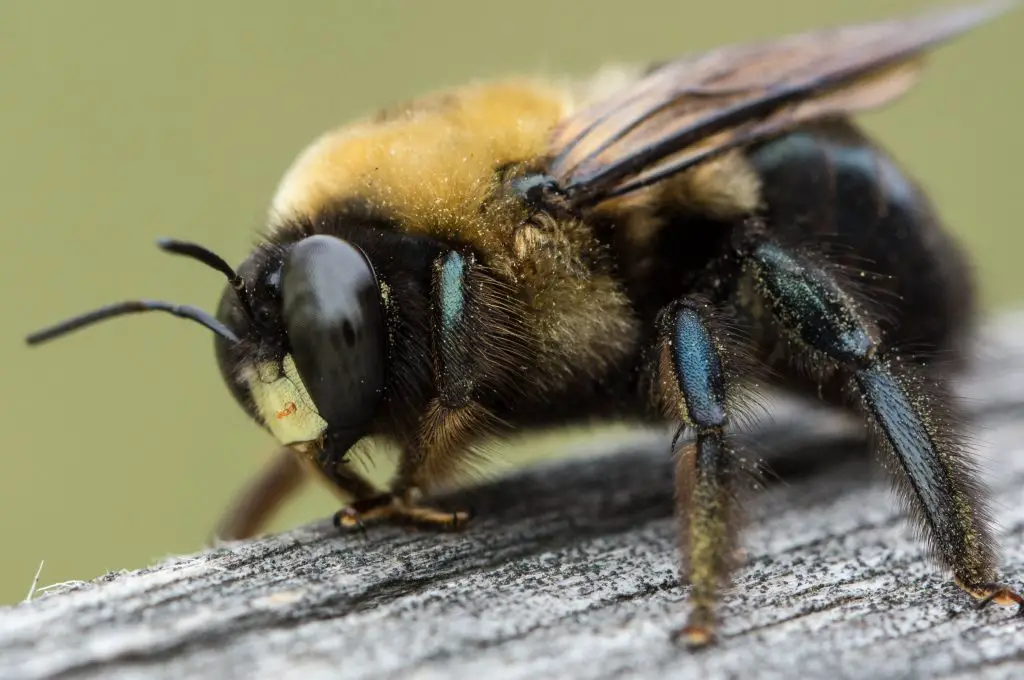Scorpions are attracted to places that provide shelter and ample food sources like insects, rodents, and other small animals. Scorpions are fascinating creatures that have intrigued researchers and homeowners alike.
With their unique appearance and venomous sting, they have earned a reputation for being formidable predators. Understanding what attracts scorpions can help homeowners take preventive measures to keep these arachnids away from their living spaces. Scorpions are drawn to areas with abundant food sources like insects, rodents, and small animals.
They are also attracted to places that offer shelter, such as piles of wood or rocks, leaf litter, and cluttered spaces. By keeping these factors in mind, individuals can reduce the likelihood of encountering scorpions in their homes or outdoor spaces.

Credit: www.gutenberg.org
The Role Of Temperature And Humidity
The role of temperature and humidity plays a crucial part in attracting scorpions to a particular area. Different species are drawn to specific ranges of temperature and humidity levels, creating favorable conditions for their survival and reproduction.
Impact Of Temperature On Scorpion Activity
Scorpions are ectothermic creatures, meaning their body temperature is regulated by the surrounding environment. Temperature plays a crucial role in their activity levels and overall behavior. Here are some ways in which temperature can affect scorpion attraction:
- Optimal temperature range: Scorpions prefer warm climates and are most active when the temperature ranges between 70 and 90 degrees fahrenheit (21-32 degrees celsius). In these optimal temperatures, scorpions tend to be more active and actively search for food.
- High temperatures and inactivity: When temperatures rise above 90 degrees fahrenheit (32 degrees celsius), scorpions tend to seek shelter and become less active. The intense heat may lead to dehydration, reducing their mobility and making them less likely to venture out in search of prey.
- Low temperatures and reduced activity: Similarly, when temperatures drop below 70 degrees fahrenheit (21 degrees celsius), scorpions become less active. The colder temperatures slow down their metabolism, resulting in decreased movement and reduced hunting behavior.
Relationship Between Humidity Levels And Scorpion Attraction
In addition to temperature, humidity levels also influence scorpion behavior and attraction. Here’s how humidity plays a role:
- Optimal humidity range: Scorpions prefer areas with moderate humidity levels, usually ranging between 40% and 60%. In these conditions, their exoskeleton stays hydrated, allowing them to remain active and hunt efficiently.
- High humidity and increased activity: Higher humidity levels can stimulate scorpion activity. The moisture in the environment enables their exoskeleton to retain moisture, providing them the necessary hydration. Consequently, scorpions are more likely to be active and seek out prey.
- Low humidity and decreased activity: On the other hand, low humidity levels can have a negative impact on scorpion activity. When the air is dry, scorpions are at risk of dehydration, which in turn limits their movement and feeding habits. They may become less active, seeking shelter in humid areas to conserve moisture.
Understanding the relationship between temperature and humidity levels is essential for comprehending scorpion attraction and behavior. By creating environments that mimic their preferred conditions, such as providing optimal temperatures and moderate humidity, you can minimize scorpion presence in your surroundings.
Scorpion Behavior And Habitat Preferences
Scorpions are attracted to dark and sheltered areas, such as cracks, crevices, and piles of debris, where they can hunt for insects. They prefer warm and dry habitats, like deserts and rocky areas, but can also be found in grasslands and forests.
Scorpions, with their menacing appearance and venomous stingers, have long been a source of fascination and fear. Understanding their behavior and habitat preferences can help us navigate their presence and minimize the risk of encounters. In this section, we will delve into the intriguing world of scorpion behavior patterns and the factors that influence their choice of habitat.
Understanding Scorpion Behavior Patterns:
- Scorpions are nocturnal creatures, primarily active during the night, as they are highly sensitive to sunlight.
- They are opportunistic predators, preying on creatures such as insects, spiders, and even small vertebrates.
- Scorpions possess excellent abilities to adapt to various environments, allowing them to thrive in diverse habitats.
- These arachnids are known for their patience, remaining motionless for extended periods, waiting for their prey to come within striking range.
- Scorpions are often territorial, staking claim to specific areas that provide them with necessities like food, shelter, and water.
Factors That Scorpions Consider When Choosing A Habitat:
- Temperature: Scorpions are ectothermic, meaning their body temperature depends on their surroundings. They favor habitats with temperatures ranging from 68°f to 99°f (20°c to 37°c), making them more prevalent in warmer regions.
- Moisture: Like most living organisms, scorpions require a water source to survive. They are attracted to areas with higher humidity levels and sufficient moisture, such as damp soil or near water bodies.
- Shelter: Scorpions often seek out sheltered areas to protect themselves from predators and extreme weather conditions. They commonly inhabit rock crevices, logs, fallen leaves, burrows, and even human-made structures.
- Vegetation and soil: Scorpions display a preference for habitats with abundant vegetation and loose soil, as these provide ample opportunities for burrowing, hiding, and hunting.
- Prey availability: The presence of an adequate food supply greatly influences scorpion habitat selection. Areas with a thriving insect population or diverse prey options are more likely to attract scorpions.
Understanding scorpion behavior patterns and their habitat preferences can aid in implementing effective prevention measures and minimizing the risk of encounters. By eliminating favorable conditions, such as excess moisture, cluttered spaces, and open food sources, you can make your environment less appealing to these intriguing arachnids.
The Significance Of Shelter And Hideouts
Scorpions are attracted to shelter and hideouts, seeking dark and secluded spaces for protection. The significance of these hideouts lies in their ability to provide ideal conditions for scorpion survival and reproduction.
Scorpions are fascinating creatures that often evoke a mix of awe and fear. Understanding what attracts them is crucial in order to prevent them from invading our homes or gardens. While factors like food and water play a role in scorpion attraction, the significance of shelter and hideouts should not be underestimated.
In this section, we will dive into the role of shelter in attracting scorpions and identify common locations where they seek refuge.
Role Of Shelter In Scorpion Attraction
Scorpions require shelter for protection against predators, extreme weather conditions, and to regulate their moisture levels. Here are some points worth considering:
- Dark and undisturbed environments: Scorpions are nocturnal creatures that prefer dark and quiet areas. They are most active during the night, seeking shelter during the day in places that offer seclusion.
- Moisture retention: Scorpions are highly sensitive to moisture loss, so they prefer shelter locations that help regulate humidity. Such environments prevent their exoskeletons from drying out.
- Temperature moderation: Extreme temperature fluctuations can be detrimental to scorpions. They are attracted to shelters that offer stable temperature conditions, avoiding areas that become excessively hot or cold.
- Protection from predators: Shelter locations that provide protection against larger animals and insects are appealing to scorpions. Hiding spots that offer narrow openings or secluded crevices can deter potential threats.
Identifying common shelter locations for scorpions is essential for effective prevention strategies. Let’s explore some of their preferred hideouts:
Common Shelter Locations For Scorpions
- Cracks and crevices: Scorpions can squeeze into remarkably tight spaces, making gaps in walls, foundations, and flooring ideal hideouts for them.
- Outdoor debris: Piles of leaves, fallen branches, and logs create fantastic hiding spots for scorpions. These locations offer both shelter and potential prey.
- Gardens and landscaping: Scorpions are known to seek refuge in areas with dense vegetation, such as shrubs, bushes, and groundcover. Additionally, gardens with mulch or bark provide them with suitable shelter.
- Rock formations: Scorpions are skilled climbers and are often found beneath rocks and stones. These natural formations offer both protection and temperature regulation.
- Human-made structures: Scorpions can find their way into buildings through small openings, vents, and cracks. They may seek shelter in attics, basements, crawl spaces, or unused rooms.
Knowing the significance of shelter in scorpion attraction and familiarizing ourselves with their common hideouts empowers us to take proactive measures in preventing their presence. By eliminating or securing these potential shelters, we can reduce the risk of encountering scorpions in our surroundings.
Stay tuned for the next section, where we will explore other factors that attract these intriguing arachnids.
Landscaping And Outdoor Features That Attract Scorpions
Landscaping and outdoor features that attract scorpions can pose a problem for homeowners. Understanding the factors that allure scorpions, such as standing water, cluttered debris, and dense vegetation, is key to preventing and addressing infestations effectively.
Landscaping Elements That Attract Scorpions
Scorpions are attracted to certain landscaping elements and outdoor features, which provide them with the ideal habitat to thrive. By understanding these factors, you can take steps to minimize the scorpion population in your surroundings. Here are some common landscaping elements that attract scorpions:
- Dense vegetation: Scorpions are drawn to areas with dense vegetation, such as overgrown shrubs and bushes. These provide ample hiding spots and shelter for scorpions during the day. Trim back any overgrown vegetation regularly to discourage their presence.
- Moist and damp areas: Scorpions are attracted to moisture, so areas with poor drainage or excessive watering can create a welcoming environment for them. Address any leaky hoses, sprinklers, or water features in your outdoor space to reduce the moisture levels.
- Piled wood and debris: Stacks of wood, logs, or piles of debris can serve as perfect hiding spots for scorpions. Keep firewood stacked away from your home and elevate it off the ground, as the moisture and darkness beneath can attract scorpions. Regularly clear away any clutter or debris in your yard.
- Rock walls and landscaping features: Scorpions are adept climbers and are known to hide in narrow cracks and crevices. Rock walls, landscaping features, and decorative stones provide ideal hiding spots for scorpions. Seal off any cracks or gaps in these features to prevent their entry.
- Low-lying ground covers: Certain ground covers, such as mulch or thick layers of gravel, can attract scorpions. These materials tend to retain moisture and provide a cool environment, which scorpions find favorable. Consider using alternative ground covers like crushed rock or decomposed granite.
- Neglected lawns: Lawns that are not well-maintained can become hotspots for scorpions. Tall grass, weeds, and unkempt lawns offer protection and shelter for them. Regularly mow your lawn, remove weeds, and keep it well-manicured to deter scorpions.
By addressing these landscaping elements and outdoor features that attract scorpions, you can create an environment that is less conducive to their presence. Taking proactive measures to modify your outdoor space will go a long way in reducing the likelihood of encountering scorpions.
Stay tuned for the next section, where we explore how outdoor structures and features become potential hideouts for scorpions.
Indoor Factors That Encourage Scorpion Presence
Scorpions are attracted to indoor environments with favorable conditions such as warm temperatures, moisture, and easy access to food sources like insects and small pests. Dark and cluttered spaces also offer hiding spots for scorpions, increasing their presence indoors.
Scorpions are nocturnal creatures that prefer warm and dry environments. While they are commonly found outdoors, they can also make their way into our homes. Understanding the indoor factors that attract scorpions is crucial in safeguarding our living spaces. Let’s explore some of these factors and ways to address them:
Conditions In Homes That Make Them Attractive To Scorpions:
- Clutter and debris: Scorpions seek out sheltered spots where they can hide and feel secure. A cluttered home provides numerous hiding places, making it easier for them to establish their presence.
- Excessive moisture: Scorpions are not fond of damp environments. Moisture in the home, whether from leaking pipes, faulty faucets, or poor ventilation, can create the ideal conditions for scorpions to thrive.
- Entry points: Cracks, gaps in windows, and doors that are ill-fitting offer scorpions easy access into your home. They can squeeze through even the tiniest openings, so it’s important to seal off any potential entry points effectively.
- Darkness: Scorpions prefer dark areas, so dimly lit spaces are particularly attractive to them. Inadequate lighting can create an inviting environment for scorpions to hide and establish their presence.
Common Indoor Hiding Places For Scorpions:
- Cluttered closets and storage areas: Scorpions are drawn to secluded spaces such as closets and storage areas cluttered with clothes, boxes, and household items.
- Bedding and linens: Scorpions can find their way into bedding, linens, and even shoes. It’s essential to regularly shake out and inspect these items, especially if they have been left undisturbed for long periods.
- Dark corners and crevices: Scorpions are masters at slipping into tight spots. They often hide in corners, cracks, and crevices along baseboards, behind furniture, and in wall voids.
- Piles of laundry: Scorpions are known to seek refuge in laundry piles, especially when they are left on the floor for extended periods. It’s advisable to keep your laundry off the ground and in sealed baskets.
By addressing these indoor factors that attract scorpions and diligently implementing preventive measures, you can significantly reduce the likelihood of encountering these unwelcome guests in your home. Remember, a clean and well-maintained living space is the first step towards scorpion-free living.
The Role Of Food Sources
Scorpions are attracted to food sources such as insects and other arthropods. These prey items serve as a primary food source for scorpions, making them a key factor in their attraction and survival.
Scorpion diet and hunting behavior:
- Scorpions are carnivorous creatures that rely on a diet primarily composed of insects, spiders, and other arthropods.
- They possess the ability to regulate their metabolism, allowing them to survive on limited food for extended periods.
- Scorpions are equipped with powerful pincers, which they use to capture and immobilize their prey.
- Their venomous stingers play a crucial role in subduing their victims, injecting neurotoxins that paralyze and kill.
Identifying common food sources that attract scorpions:
- Insects: Scorpions are attracted to a wide variety of insects, including crickets, beetles, ants, and cockroaches. These insects provide a readily available food source for scorpions in both urban and natural environments.
- Spiders: Many species of scorpions also feed on spiders. Spiders are often found in dark, sheltered areas, which are also attractive to scorpions. The abundance of spiders can be a contributing factor in scorpion populations.
- Small arthropods: Scorpions prey on smaller arthropods like centipedes and millipedes. These creatures are a valuable source of sustenance for scorpions, making them more likely to establish habitat in areas where these arthropods are present.
- Flies and mosquitoes: While not their primary diet, scorpions do consume flies and mosquitoes when the opportunity arises. The presence of these flying insects can attract scorpions, particularly in regions where they are abundant.
Understanding the role of food sources in attracting scorpions is essential for effective pest control and prevention. By minimizing the availability of these food sources, you can reduce the likelihood of scorpion infestations in your surroundings.
Uncovering The Impact Of Lighting
Discover the true impact of lighting on scorpion attraction and presence. Understand the factors that draw scorpions towards certain lighting conditions. Uncover how lighting influences scorpion behavior and ways to mitigate their presence.
Types Of Lighting That Attract Scorpions
Scorpions are creatures that are attracted to specific types of lighting. The type of lighting you use can significantly influence their presence in your surroundings. Here are the different types of lighting that tend to attract scorpions:
- Ultraviolet (uv) lighting: Scorpions are highly attracted to uv lighting, as they perceive it as moonlight, which is the primary source of illumination in their natural habitat. Uv lights emit shorter wavelengths of light that mimic moonlight, making it appear more appealing to scorpions.
- White fluorescent lighting: Scorpions are also drawn to white fluorescent lights, which emit a broad spectrum of light similar to moonlight. These lights have a higher uv component, which is why they can attract scorpions effectively.
- Blue lighting: Blue lights, such as led lights, also act as a magnet for scorpions. These lights emit a shorter wavelength that is reminiscent of moonlight, which scorpions find highly attractive.
How Different Lighting Conditions Influence Scorpion Presence
The lighting conditions in your surroundings play a significant role in determining scorpion activity. Here’s how various lighting conditions can influence the presence of scorpions:
- Bright lighting: Scorpions tend to avoid areas with bright lighting as they prefer darkness and shadows. Bright lights can make scorpions feel exposed and vulnerable, leading them to seek shelter elsewhere.
- Low lighting: Scorpions are most active during low-light conditions, as they prefer dimly lit environments similar to their natural habitat. They are more likely to be spotted moving around during nighttime or in areas with low artificial lighting.
- Prolonged lighting: Continuously illuminated areas may deter scorpions, as they prefer fluctuations between light and dark. A consistent source of light can disrupt their natural behavior and make them seek darker locations.
By understanding the types of lighting that attract scorpions and how different lighting conditions influence their presence, you can take steps to reduce their attraction to your surroundings. Consider adjusting your lighting choices and ensuring there are adequate periods of darkness for these nocturnal creatures.
Natural Predators And Scorpion Attraction
Scorpions are attracted to areas abundant in their natural prey, such as insects, spiders, and small vertebrates. Keeping a clean and clutter-free environment inside and outside your home can help reduce the presence of scorpion attractants.
Scorpions are fascinating creatures that often strike fear in the hearts of many. They have adapted to survive in a wide range of environments, and understanding what attracts them can help us better coexist with these arachnids. One factor that plays a significant role in scorpion population control is the presence of natural predators.
Let’s delve into this topic and explore how the absence of predators can actually lead to increased scorpion attraction.
The Role Of Natural Predators In Scorpion Population Control:
- Predatory birds: Birds such as owls and kites are natural predators of scorpions. Their keen eyesight and agile movements allow them to swoop down and catch scorpions on the ground. This helps maintain a natural balance in the ecosystem by keeping scorpion populations in check.
- Rodents: Small mammals like mice, shrews, and even certain species of rats can also be effective scorpion predators. These rodents have a strong sense of smell and can detect scorpions hidden in burrows or crevices. They can easily dig them out and devour them as a source of food.
- Other arachnids: Some scorpions fall prey to other arachnids such as spiders. These agile predators are equipped with venom or silk that immobilizes scorpions before they become a meal. This interplay between arachnids highlights the intricate dynamics of nature.
- Reptiles: Certain lizard species, such as the grasshopper mouse or the collared lizard, actively hunt scorpions. These reptiles have developed immunity to the venom of scorpions, rendering them voracious predators in their own right.
- Amphibians: Few amphibians like the texas horned lizard and certain toads also feed on scorpions. These amphibians have evolved a resistance to the venom through adaptation, making them unharmed when devouring scorpions.
The presence of these natural predators helps to regulate scorpion populations, reducing the likelihood of encountering these fascinating yet potentially dangerous creatures.
How The Absence Of Predators Can Lead To Increased Scorpion Attraction:
- Lack of population control: Without natural predators to keep their numbers in check, scorpions can rapidly multiply and spread in an area. This unrestricted growth can lead to larger populations, increasing the likelihood of encountering scorpions in and around homes or other inhabited spaces.
- Unbalanced ecosystem: When the natural balance between predators and prey is disrupted, it can disrupt the entire ecosystem. The absence of scorpion predators can cause a chain reaction, leading to an overabundance of scorpions and subsequent impacts on other species’ populations.
- Available food sources: Scorpions primarily feed on insects and other small invertebrates. In the absence of predators, the unchecked growth of these food sources can provide a steady supply of sustenance for scorpions. This abundance of prey attracts scorpions and increases their presence in an area.
Understanding the role of natural predators in scorpion population control highlights the need to maintain a healthy and balanced ecosystem. By respecting the natural interactions between species, we can better navigate our coexistence with these intriguing arachnids and minimize the chances of encountering them in unwanted places.
Preventive Measures To Deter Scorpions
Scorpions can be attracted by sources of food, such as insects and other pests, as well as areas with excess moisture and clutter. To prevent scorpions, it is essential to eliminate these attractants by keeping a clean and dry environment, sealing cracks and crevices, and controlling the population of bugs and pests in and around your home.
Scorpions are nocturnal creatures that can pose a threat if they infiltrate your living space. Taking preventive measures is crucial in keeping scorpions at bay. By implementing effective techniques for scorpion prevention and reducing scorpion-friendly conditions, you can create an environment that is less attractive to these arachnids.
Here are the steps you can take to minimize the risk of scorpion encounters:
Effective Techniques For Scorpion Prevention:
- Seal all cracks and crevices: Scorpions can squeeze through even the tiniest openings, so it’s important to seal any cracks or crevices in your home’s exterior. Use weatherstripping or caulk to seal gaps around doors, windows, and pipes.
- Install door sweeps: Place door sweeps on all exterior doors to create a tight seal and prevent scorpions from entering. Make sure there are no gaps between the door and the floor.
- Use screens on windows: Install fine mesh screens on windows to keep scorpions and other pests out while still allowing fresh air to circulate.
- Remove clutter: Scorpions love to hide in cluttered areas, so keep your living space tidy and clutter-free. Regularly declutter and organize storage areas, both indoors and outdoors.
- Don’t attract prey: Scorpions are attracted to places where they can find food. Avoid attracting their prey, such as insects and spiders, by keeping your home clean and free of pests.
- Outdoor lighting: Scorpions are drawn to light, especially at night. Minimize outdoor lighting intensity, or use yellow or orange bulbs, as they are less attractive to scorpions.
- Outdoor landscaping: Trim shrubs and vegetation away from the exterior of your home. Scorpions may use these as hiding places or pathways to enter your house.
Steps To Reduce Scorpion-Friendly Conditions In Your Environment:
- Keep your property tidy: Remove debris, firewood, and piles of leaves from your yard, as they can create ideal hiding spots for scorpions.
- Regularly inspect your property: Conduct routine inspections of your property, both indoors and outdoors, to identify and eliminate potential scorpion habitats.
- Remove excess moisture: Scorpions are attracted to damp areas. Fix any leaks, ensure proper drainage, and keep humidity levels under control within your home.
- Store belongings properly: Store items off the floor and away from walls to minimize potential scorpion hiding spots. Utilize sealed containers for storage to prevent scorpions from accessing your belongings.
- Regular pest control: Consider hiring a professional pest control service to regularly treat your property for scorpions and other pests. They can implement effective preventive measures and provide ongoing monitoring.
By following these preventive measures, you can minimize the risk of scorpions invading your living space. Being proactive and implementing these techniques will help create an environment that is less appealing to scorpions, ensuring the safety and peace of mind for you and your family.
Stay vigilant and take the necessary steps to deter these arachnids from accessing your home.
Frequently Asked Questions Of What Attracts Scorpions
Why Do Scorpions Come Into Houses?
Scorpions may come into houses in search of shelter, food, or moisture. They can enter through tiny cracks or openings and are attracted to areas with clutter, excess moisture, or other insects. Keeping your home clean, clutter-free, and sealing any entry points can help prevent scorpions from entering.
What Attracts Scorpions To A Yard?
Scorpions are attracted to yards that provide them with suitable hiding places and a source of food. Mulch, rocks, tall grass, and woodpiles can all create favorable hiding spots for scorpions. Additionally, scorpions are attracted to areas with an abundant supply of insects, so keeping your yard clear of pests can help deter them.
Do Scorpions Like Light Or Darkness?
Scorpions are nocturnal creatures, meaning they are most active during the night and prefer darkness. They tend to hide in dark, secluded areas like cracks, crevices, and under rocks during the day. However, they are also attracted to light sources at night, so keeping outdoor lights turned off or using yellow or sodium vapor bulbs can help minimize their attraction.
Conclusion
Understanding what attracts scorpions is essential for effective pest control and prevention. By addressing the factors that draw them in, such as moisture, shelter, and food sources, homeowners can significantly reduce the likelihood of encountering these arachnids in their living spaces.
Implementing strategies like sealing cracks, reducing humidity levels, and decluttering both indoor and outdoor areas can create an inhospitable environment for scorpions. Additionally, maintaining a clean and well-maintained yard, along with regular inspections and professional pest control services, can further help minimize the risk of infestation.
Remember, prevention is key when it comes to managing scorpion populations. By taking proactive measures and addressing the attractants, homeowners can keep their homes scorpion-free and enjoy peace of mind.

“My name is Leo Jacob, and I hold a Bachelor of Science degree with Honors in Applied Environmental Science and Sustainability from the University of the West of Scotland. Since childhood, I’ve been passionate about living an eco-friendly life. After completing my studies, I dedicated myself to finding simple ways to lead a more environmentally conscious lifestyle. I launched ecolifely.com to share my educational background and practical experiences with everyone, hoping to inspire others to join me in creating a greener, more sustainable world.”


